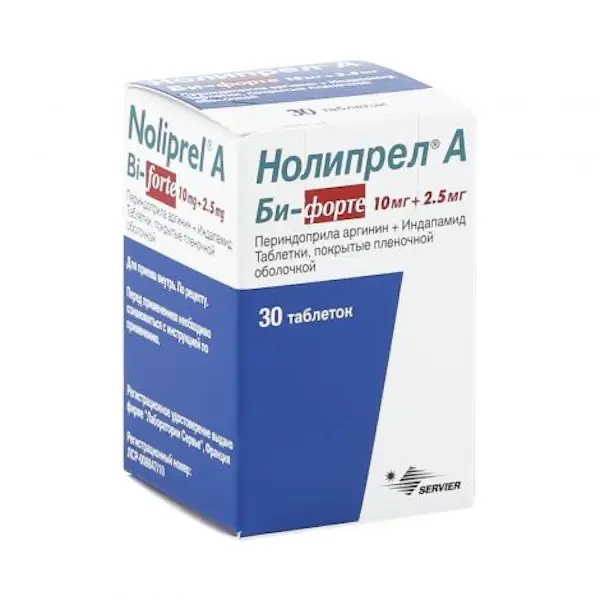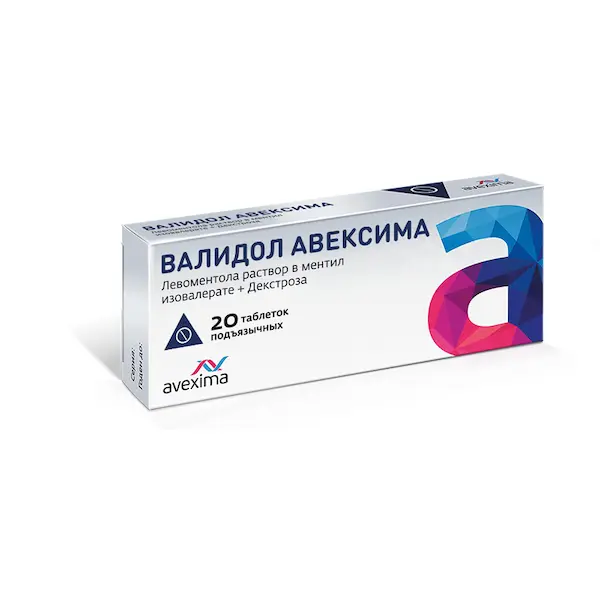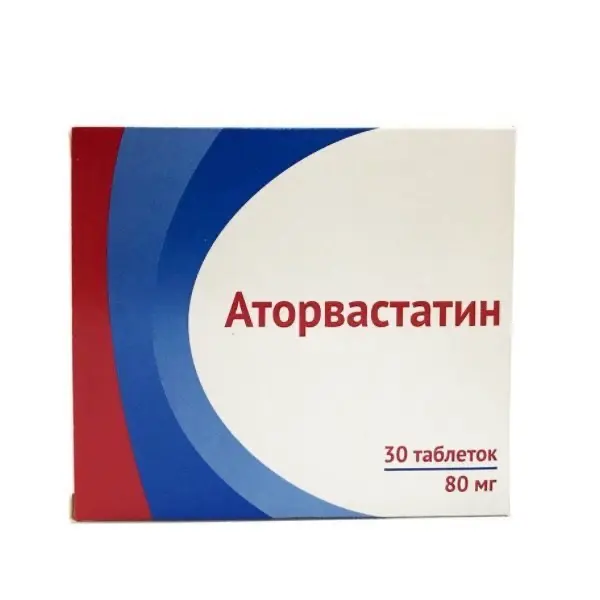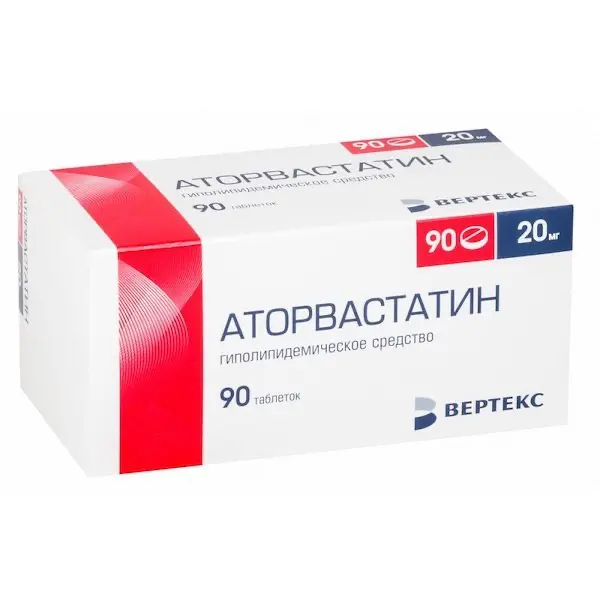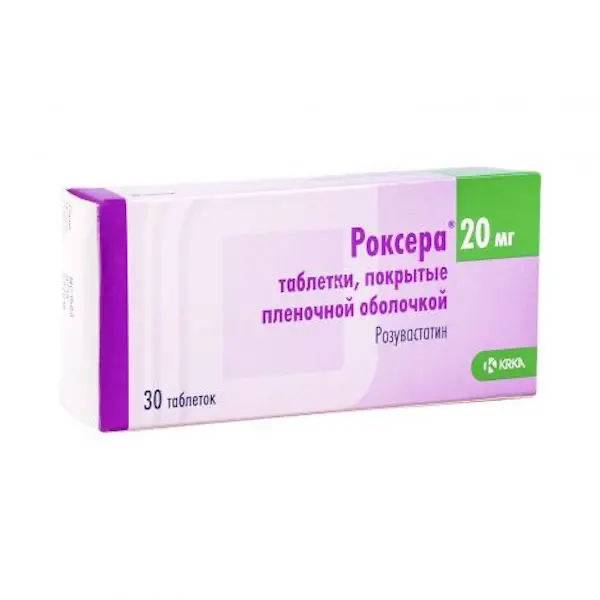Description
Noliprel A Bi-forte Pharmacodynamics
The drug Noliprel A Bi-forte is a combination drug containing indapamide and perindopril arginine. Pharmacological properties
Noliprel A Bi-Forte combines the individual properties of each of its components.
Mechanism of action
Noliprel A Bi-forte
The combination of perindopril and indapamide enhances the antihypertensive effect of each.
Indapamide
Indapamide belongs to the group of sulfonamides, with pharmacological properties similar to thiazide diuretics. Indapamide inhibits reabsorption of sodium ions in the cortical segment of the Genle loop, which leads to increased renal excretion of sodium ions, chlorine and, to a lesser extent, potassium and magnesium ions, thereby increasing diuresis and reducing blood pressure (BP).
Perindopril
Perindopril is an inhibitor of the enzyme that converts angiotensin I to angiotensin II (angiotensin-converting enzyme (ACE) inhibitor. ACE, or kininase II, is an exopeptidase that both converts angiotensin I into the vasoconstrictor angiotensin II and degrades bradykinin, which has a vasodilator effect, into an inactive heptapeptide.
As a result, perindopril:
– Reduces aldosterone secretion;
– by the principle of negative feedback, it increases plasma renin activity;
– with prolonged use it reduces total peripheral vascular resistance (TPRR), which is mainly due to the effect on the vessels in the muscles and kidneys. These effects are not accompanied by retention of sodium ions or fluid or development of reflex tachycardia.
Perindopril normalizes myocardial function by reducing preload and postload. The study of hemodynamic parameters in patients with chronic heart failure (CHF) revealed:
– decreased filling pressure in the left and right ventricles of the heart;
– decreased ROSS;
– increase of cardiac output and cardiac index; – increase of muscular peripheral blood flow.
Indications
Essential hypertension (patients requiring therapy with perindopril 10 mg and indapamide 2.5 mg)
Contraindications
Indapamide
– Hypersensitivity to the active substance or any other sulfonamide.
– Moderate or severe renal impairment (creatinine clearance (CK) below
60 ml/min)
– Hepatic encephalopathy
– Severe hepatic impairment.
– Hypokalemia.
– Concomitant use with non-antiarrhythmic drugs that may cause pirouette-type polymorphic ventricular tachycardia is not reasonable (see section “Interaction with other medicinal products”).
– Breast-feeding period (see section “Administration during pregnancy and breast-feeding”).
– Childhood under 18 years of age (efficacy and safety have not been established).
Perindopril
– Hypersensitivity to the active substance or any other ACE inhibitors.
– History of angioedema (Quincke’s edema) with ACE inhibitors (see “Special Precautions”).
– Hereditary / idiopathic angioedema.
– Pregnancy and breastfeeding (see section “Administration during pregnancy and breastfeeding”).
– Concomitant use with aliskiren and medicinal products containing aliskiren in patients with diabetes mellitus and/or moderate or severe renal impairment (glomerular filtration rate (GFR) less than 60 ml/min/1.73m² body surface area) (see sections “Pharmacodynamics” and “Interaction with other medicinal products”).
– Co-administration with angiotensin II receptor antagonists (ARA II) in patients with diabetic nephropathy (see section “Cautionary Note”).
– Concomitant use with the combination valsartan + sacubitril (see sections “Interaction with other medicinal products” and “Cautions”).
– Extracorporeal therapy leading to blood contact with negatively charged surfaces (see section “Interaction with other medicinal products”).
– Severe bilateral stenosis of the renal arteries or stenosis of the artery of the only functioning kidney (see section “Special indications”).
– Childhood under 18 years of age (efficacy and safety not established).
Noliprel A Bi-forte
– Hypersensitivity to any of the excipients (see section “Composition”).
– Because of insufficient clinical experience, Noliprel® A Bi-Forte should not be used in patients on hemodialysis or in patients with untreated decompensated heart failure.
– Childhood under 18 years of age (efficacy and safety are not established).
– Presence of complete lactase deficiency, galactosemia or glucose-galactose malabsorption syndrome (the drug contains lactose).
Dosage and administration
- Orally, 1 tablet once a day, preferably in the morning, before a meal.
- Special patient groups
- Elderly patients
In elderly patients creatinine clearance is calculated taking into account age, body weight and sex. Elderly patients with normal renal function receive Noliprel A Bi-forte 1 tablet once daily and monitor the degree of BP lowering. - Renal dysfunction
Noliprel A Bi-Forte is contraindicated in patients with moderate or severe renal dysfunction (CK below 60 ml/min). Regular monitoring of plasma creatinine and potassium concentrations is required during therapy. - Impaired hepatic function.
Noliprel A Bi-forte is contraindicated in patients with severe hepatic impairment.
No dose adjustment is required in moderate hepatic impairment. - Children and adolescents
Noliprel A Bi-forte is contraindicated in children and adolescents under 18 years of age because of lack of data on efficiency and safety of the drug administration in patients of this age group.

